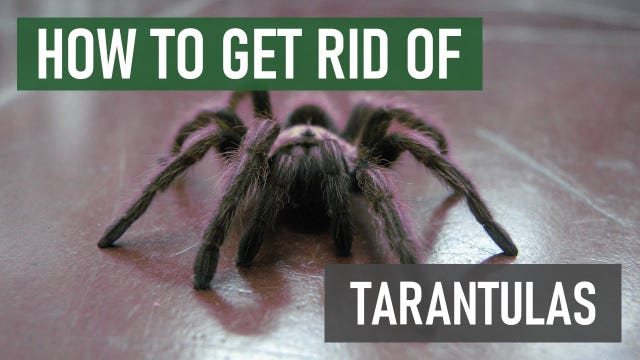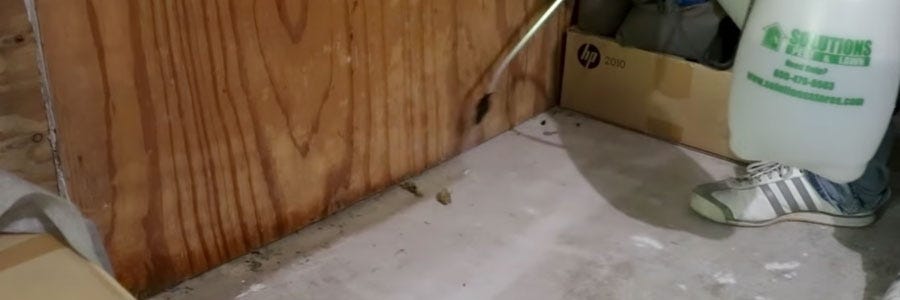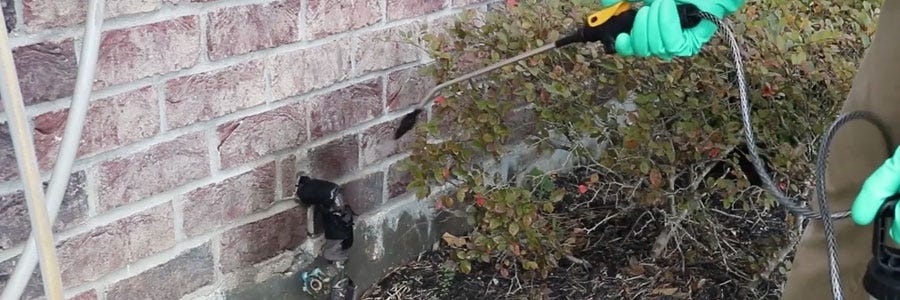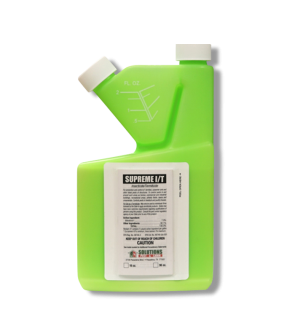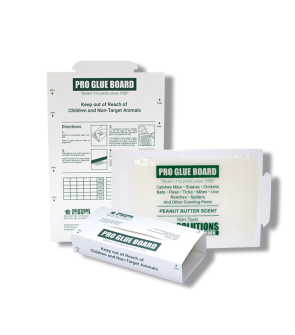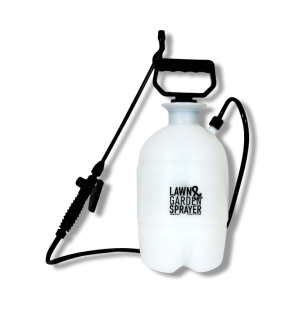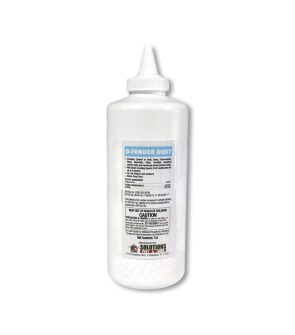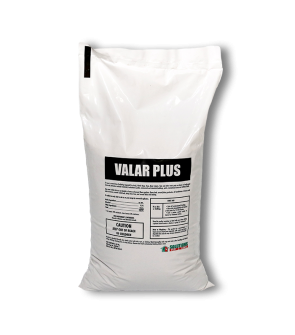Gain access to personalized product screening, the best pricing, rewards, and more!
Most Effective Products
Tarantula Control: How To Get Rid of Tarantulas
The tarantula is the world's largest spider and a very rare spider to come in contact with if you live in a residential area. Because of its sheer size and girth, most people who come in contact with it are frightened.
Despite the size of the tarantula, this spider is not dangerous. However, if they feel provoked, they sting, causing pain and swelling. The tarantula is a very shy and docile creature that isn’t an aggressive biter, and some people even keep it as a pet. Even if they bite, the effect is similar to a bee sting and is not deadly. However, they can be alarming if they’ve embarked upon your home during their travels.
Tarantulas are nocturnal creatures of the night and hunt for food mostly at night. They like small insects and occasionally eat frogs, smaller lizards, and smaller spiders. They are very shy and tend to scurry away from humans unless threatened when they bite. When hanging around yards and homes, tarantulas make a habitat around dark corners in garages, storage spaces, and crawl spaces.
If you have encountered a tarantula in your home, you can get rid of it with the help of our DIY treatment guide below. Our pest control experts have compiled easy-to-follow step-by-step directions to help you dispose of tarantulas from your home quickly and affordably.
Identification
Before treating, you must be certain you are dealing with tarantulas and not some other pest. Knowing what tarantulas look like is important for proper identification. Here are the defining characteristics of a tarantula:

- There are over 800 species of tarantula on the planet, and they come in various color patterns. The common trait of all species is their large size, which can range between 1 to 4 inches in body length with leg spans of up to one foot (12 inches). This means that a tarantula can be as large as a dinner plate, making it the world's largest known arachnid.
- Most tarantulas are black or brown in color and have hairy bodies. The body hair is also a distinguishing trait since it is very dense and plentiful and makes tarantulas appear larger than they really are. Specific species can also feature red, orange, or yellow fur.
Use the image and description above to help you identify tarantulas on your property. If you're having trouble with identification, contact us. We will assist you in correctly identifying the pest and offer you our best product recommendations for the target pest.
Inspection
After you have confirmed that you are dealing with a tarantula, you can proceed with an inspection. During this process phase, you must locate the areas where the tarantula is active or hiding. This will help you determine the treatment approach and where to focus your insecticides and traps.
Where To Inspect
Wild tarantulas in the U.S. are typically encountered in warmer, drier climates like California, Arizona, or Texas. They can be found outside in desert regions but are known to wander into homes throughout the summer and fall. They sometimes do this by slipping through open doors or torn window and door screens. They can also find their way into window wells or gutters. From here, the pests move into houses through cracks in the home siding or spaces under the crawl space. Check dark and quiet areas of your home to find a Tarantula on the loose.
What To Look For
Tarantulas are nocturnal and hunt for food at night. During the day, these pests can be found in underground burrows or underneath debris. Tarantulas do not make webs like most spiders but spin silk to create egg sacs.
Though tarantulas are normally timid and prefer to stay away from humans, they will guard their eggs closely. Be cautious, as tarantulas will bite if they feel threatened. The bite is painful and may cause swelling or lesions, but it is overall non-lethal.
Treatment
Before chemical application, remember to read all product labels, follow application instructions, and wear personal protective equipment to stay safe.
To control tarantulas, the main objective is to discourage them from harboring by removing conducive conditions that attract them to your home.
This is done by applying insecticides to take away the tarantula's food supply and carrying out environmental modifications around your property to make your home less appealing for the tarantula to settle.
Step 1: Declutter
Reduce the clutter in and around the home. The more junk you have lying around, the more likely a spider will make themselves at home--in your home. Tarantulas can establish burrows in overgrown areas and hide where clutter is dense.
Tidy up your home, remove unnecessary things you hoard, and especially clean up your storage spaces, such as closets, garages, and basements/attics. To further reduce their hiding places, you can mow the lawn, trim overgrown shrubs, and pick up wooden debris.
Also, if you have insect problems, eliminate those insects since the tarantula is likely around because you have insects it can prey upon.
Step 2: Address Entry Points
Address any entry points you have found and apply exclusion methods to prevent tarantulas and other pests from invading. Tight cracks and crevices may be filled with caulk, while larger voids may need to be stuffed with copper mesh.
Repair torn screens or affix brush or rubber seals on doors and windows. After you have cleaned and addressed all possible entry points, you can proceed with the following step.
Step 3: Broadcast Valar Plus Bifenthrin Granules
Valar Plus Bifenthrin Granules is a granular insecticide made to eliminate turf-dwelling pests. This application aims to eliminate tarantulas' main food source, so they are encouraged to travel away from your property.
With a broadcast spreader, apply 4.6 lbs. of Valar Plus Bifenthrin Granules per 1,000 sq. ft. of treatment area to fully cover the pests in your yard.
Once you evenly distribute the product across your lawn, you must activate it with water. You can do this by applying a liquid insecticide like Supreme IT.
Step 4: Insecticide Treatment with Supreme IT
Supreme IT is a broad-spectrum insecticide labeled for treating many pests, including spiders. It works great as a barrier treatment to keep pests away because it has a long residual effect that continues to kill for up to 90 days after application.
To apply Supreme IT, mix it with water in a handheld pump sprayer.
Apply Supreme IT at a rate of 0.33 to 1 oz. per gallon of water to cover 1,000 sq. ft. Use the higher rate if facing a heavy pest infestation.
Evenly broadcast your mixed Supreme IT solution over the treatment area with your selected sprayer. Use a fan or cone setting with low pressure to ensure full, even coverage.
Once you have activated the Valar Plus Bifenthrin Granules, spray around the perimeter of your home. Spray around any entry points, such as doors, windows, and other voids pests and spiders can use to invade. Next, spray your structure's outer perimeter by spraying 3 feet up the structure and 3 feet out.
Once the outdoor application is complete, you will move on to indoor treatment. Treat entry points like doors and windows and where pests may be hiding, such as cracks and crevices. This includes baseboards, around water pipes, around doors and windows, and behind and underneath appliances. You will also want to treat attics, basements, and garages. When complete, allow the solution to dry.
If you encounter any spiders while applying, you may spray them directly.
Step 5: Set Up Glue Traps
After chemical treatment, glue traps will be set up to monitor for future activity by tarantulas and other pests. The Solutions Pro Glue Boards make setup and placement easy.
Simply remove the trap's waxy paper seal and lay it flat against the wall where pest activity has been seen. Make sure to keep this trap out of the reach of children and pets. If you, a child, or a pet get stuck on these glue boards, you can use cooking oil to loosen the trap's stickiness.
Prevention
Once the tarantula has been killed or trapped, dispose of the insect properly or turn it into animal or insect control for collection. If you are using non-lethal means, you can safely release them outdoors somewhere. After that, you can discourage future tarantula invasions by:
- Vacuuming up egg sacs and putting in place exclusion measures that will keep spiders out of your house.
- Some suggestions include screens on doors, weather stripping to eliminate gaps under doors, and caulking to seal up holes and possible points of entry. You can also use an insecticide to create a barrier around your home to discourage tarantulas from trespassing.
- Address moisture issues inside of your home since pests are attracted to moist rooms. For this reason, fix any leaky pipes, address air conditioning problems, drain any standing water, and dry your sinks every night.
- Continue to clean inside and outside your home to eliminate potential spider harborages. Rake the lawn regularly, pick up debris, and stack firewood away from your home's foundation.
- Finally, Spray a quarterly treatment of Supreme IT around your home and yard for continued insect and tarantula control.
Key Takeaways
What are Tarantulas?
- Tarantulas are large, hairy spiders that can be scary to encounter but are harmless and non-aggressive. They often wander into yards and homes in search of smaller insects to eat,, such as beetles, crickets, lizards,, and moths.
How To Get Rid of Tarantulas
- Our top recommended ways to kill or capture a tarantula are treating it with Supreme IT Insecticide, Valar Plus Bifenthrin Granules, or placing a large glue board down to trap it.
Preventing Tarantula Reinfestation
- To prevent tarantulas, conduct exclusion measures around your home and spray a Supreme IT Insecticide barrier treatment to prevent tarantulas from exploring your home.






